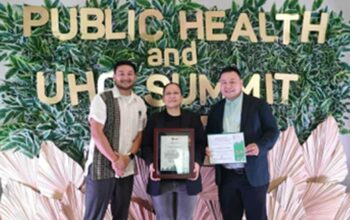
IN A concerted effort to promote ecological resilience and sustainable urban development, the City Government of Tagbilaran, through the Tagbilaran City Environmental Management Office (TCEMO), convened key stakeholders for the presentation of the Final City Biodiversity Index (CBI) Results at the Panda Tea Garden on May 15, 2025.
The activity, held in partnership with the Department of Environment and Natural Resources (DENR) CENRO Tagbilaran and the DENR Regional Office 7, is part of the ongoing implementation of the Urban Biodiversity Program, which aims to assess and enhance green spaces in highly urbanized areas.
Presiding over the meeting was Engr. Raul T. Aparicio III, Head of TCEMO, and he emphasized the city’s commitment to integrating biodiversity management into its development plans.
Representatives from the Sangguniang Panlungsod, national agencies, academic institutions, civil society, and sectoral groups attended the event.
Mr. Reginaldo G. Bueno, Biologist of the Conservation and Development Division of DENR Regional Office 7, delivered an in-depth presentation on the Urban Biodiversity Program, highlighting the national framework and strategies for biodiversity conservation in cities.
This was followed by the presentation of the Biodiversity Site Assessment results for Tagbilaran City by Ms. Juliet Tadle, Forester Technician I from DENR-CENRO Tagbilaran.
Her presentation covered the ecological characteristics, green space distribution, and habitat conditions within the city.
The culminating presentation of the Tagbilaran City Biodiversity Index Results was delivered by the TCEMO technical staff under the leadership of Engr. Aparicio.
The index provides a measurable snapshot of the city’s biodiversity status, based on indicators such as ecosystem services, habitat quality, and species richness.
Stakeholders in attendance lauded the city’s proactive stance in assessing its biodiversity baseline. Their insights and feedback during the open forum are expected to feed into the formulation of comprehensive strategies and actions for the protection and enhancement of the city’s ecological assets.
The output of the activity will serve as a critical reference for the upcoming Urban Biodiversity Management Planning Workshop scheduled on May 28–29, 2025, which aims to develop a strategic, multi-sectoral plan for integrating biodiversity considerations into city planning, land use, and infrastructure development.
As Tagbilaran continues to urbanize, this initiative affirms the city government’s dedication to inclusive, science-based, and environmentally sound governance, ensuring that nature remains at the heart of urban progress.


